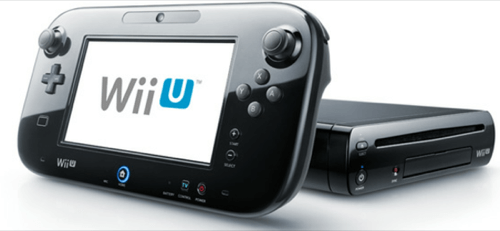
One screen in your living room is no longer enough. At the E3 Show in Los Angeles this week, gaming console vendors Microsoft, Sony and Nintendo outlined plans to use the second screen to challenge the TV makers as the masters of home entertainment.

The premise is simple: Two screens are better than one, and nowhere is that more true than gaming. With a touchscreen tablet functioning as a controller, game designers can reclaim TV real estate for gaming action, pushing status bars and controls to the secondary screen.
The second screen can also improve a game’s playability. In multiplayer strategy and sports games, for example, players can map out complex actions in privacy on their individual touchscreens (just because it’s called “second screen” doesn’t mean you have to stop at two), then watch the results play out on the shared television screen. When the TV is in use or gamers are on the move, the second screens can serve as a monitor.
Of course, gaming is far from the only application for the second screen. For years, millions of folks have been using computers, smartphones and tablets to check sports stats during the game or looking up cast members on IMDB while watching a movie. Tighter integration of the second screen will make those uses simpler and more intuitive – and open up new uses as well.

What’s Coming
The Wii U was the only new hardware demoed by the Big 3 at the Electronic Entertainment Expo (E3), but Nintendo focused solely on gaming applications of the second screen, like toggling between single- and dual-screen interfaces. The company left discussion of how the Wii U would “revolutionize the living room” for another time.
Microsoft went into more detail when it presented Xbox SmartGlass, an app that integrates your television and your smartphone or tablet – even if it’s made by Apple. Like other second-screen systems, SmartGlass provides a tablet-based remote control with supplementary information – Microsoft demoed an interactive map of Westeros supplementing a TV presentation of “Game of Thrones” (see below). But SmartGlass also lets users move content between devices, starting a movie on a tablet or smartphone, for example, then continuing it on the TV screen. Combined with the Xbox Kinect’s gesture recognition and the newly announced Internet Explorer for Xbox, SmartGlass could prove to be a very powerful interactive entertainment system.

Of course, it could also turn out to be a jumbled mess. After Microsoft’s failed effort with WebTV in the 1990s, let’s hope the company is better prepared this time around.
Who Controls the Controller?
The big question isn’t whether we’ll be managing our entertainment system with a tablet – that’s pretty much a given at this point. The real issue is whose software we’ll be using to do it.
At the moment, home entertainment options are a bit of a jumble of different brands and components from multiple vendors. A typical home might have a game console, a Blu-ray player and a TV that are all capable of providing access to Netflix, Hulu, Pandora and the Web. Deciding on a master system is often the result of cabling issues, or which one has the most free HDMI ports.
All the vendors are scrambling to come up with a compelling reason why they should be one controller to rule them all. Current possibilities include voice control, face recognition or exclusive content deals.
Until recently, it looked like Samsung and other TV makers (possibly including Apple) would set themselves apart with their various smart TV initiatives. At E3, Microsoft and Nintendo (and to a lesser extent, Sony) fired back, aiming to make remote controls attached to their gaming devices equally intelligent.
Gaming vendors will gain a huge advantage if they can convince gamers to use consoles as their primary entertainment device. But that doesn’t necessarily mean they’ll be able to rope in everyone else. Will SmartGlass or its competitors be strong enough to convince Grandpa to buy in?
It’s far too early in the race to crown a winner. We don’t even know the rules yet. But not so long from now, it’s a safe bet you’ll routinely be watching more than one screen. And there’s a good chance your game system may be in control of all of them.

















